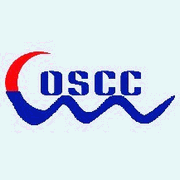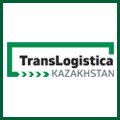2012-03-15
Minister Heidi Hautala, responsible for Ownership Steering in the Prime Minister’s Office, has assigned Senior Financial Counsellor Jarmo Väisänen to convene the Shareholders' Nomination Committee of Finnair as soon as possible, and to prepare a new proposal concerning the composition of Finnair's Board of Directors at the company's Annual General Meeting to be held on 28 March 2011. Minister Hautala believes that Board members who in autumn 2009 participated in decision-making concerning management’s special retention bonuses will not be able to credibly serve as Finnair Board members in the future.
The Shareholders' Nomination Committee comprises, based on their ownership in Finnair as of 1 November 2011, representatives of the Finnish State, Local Government Pensions Institution and Skagen Global Verdipapirfond, i.e. Jarmo Väisänen, Robin Backman and Michael Gobitschek respectively.
Finnair will disclose the Nomination Committee's new proposal on Board members as soon as the Committee has submitted its proposal to Finnair's Board.
Source Nasdaqomx
Latvian airline airBaltic carried 180,476 passengers in February 2012, representing 1% increase comparing with the same month in 2011, when airBaltic transported 178 809 passengers.
During the two months of 2012, airBaltic transported a total of 371,442 passengers, or 1% more than during the same period in 2011, when the total number of passengers was 366,045.
In February, airBaltic operated 3,338 flights, or 10% less than in February 2011 when airBaltic operated 3,694 flights.
The airline’s load factor, which represents the number of passengers as a proportion of the number of available seats, in February 2012 was at a level of 69% - or 7 percentage points more than in February 2011.
The 15-minute flight punctuality indicator for airBaltic was at a level of 88.4% in February 2012. This means that 88 of every 100 airBaltic flights in February departed at the planned time or with a delay of no more than 15 minutes.
Source A/S Air Baltic Corporation
Shetland’s inshore shellfish industry was congratulated today (14 March 2012) by Fisheries Secretary Richard Lochhead for their ‘outstanding achievement’ as three of their main fisheries - King Scallop, Velvet Crab and Brown Crab became the first of their kind globally to achieve the prestigious Marine Stewardship Council (MSC) certification as sustainable and well-managed fisheries.
This is a significant development for an industry which is currently worth at least £7 million to the Shetland economy.
The certificate was presented by Scottish Fisheries Secretary Richard Lochhead at seafood restaurant Ondine in Edinburgh. Guests enjoyed a luxury Shetland shellfish lunch, specially prepared by chef and owner Roy Brett, who is renowned for his commitment to sourcing MSC seafood.
Fisheries Secretary Richard Lochhead said: “The clear, pristine waters surrounding Shetland produce some of the highest quality and most delicious seafood anywhere in the world. Therefore I’m delighted that the Shetland Shellfish Management Organisation has been able to achieve Marine Stewardship Council certification for their King Scallops and Brown and Velvet Crab – a world first.
“MSC certification illustrates that Shetland King Scallops and Brown and Velvet Crab meet the ultimate sustainability standards and it is an outstanding achievement for Shetland. Scotland now has eight MSC certified fisheries and a further six in the full assessment process – covering more than 50 per cent of the value of our landings. This demonstrates our strong and ongoing commitment to supplying consumers with premium and sustainable seafood options.”
Roy Brett added: “This proves we are at a very important moment in Scotland in terms of safeguarding the sea for future generations. I’m just back from Abu Dhabi where I also saw change underway in terms of protecting fish and shellfish. Here – and there, fishermen, their families and their communities are working together with Government, environmentalists and scientists, to give our seas a real chance to recover. We all have a part to play.”
The independent assessment process took 15 months to complete and was co-ordinated by the Shetland Shellfish Management Organisation (SSMO) in partnership with NAFC Marine Centre UHI. Financial assistance for progressing the certification was provided by The Co-operative’s £200,000 Sustainable Fishing Fund that is supporting fisheries across the UK through MSC assessments, as well as the Resource Legacy Fund.
Jennifer Mouat from SSMO explained: “We are delighted to have achieved this certification which recognises that Shetland shellfish has something unique to offer consumers. We are proud to be the only fishery in the world to have the MSC label for Brown and Velvet Crab and King Scallops.
“It has taken over a year to get here and it has been a rigorous process – but the results are fantastic and well-deserved. The certification marks an independent measure of success and demonstrates our long-term commitment to the sustainability of the species and the stocks in Shetland’s inshore waters.
“In Shetland we have a regulating order allowing us to self-manage out to the six-mile limit and have amassed 12 years worth of data, which is very unusual for inshore fisheries. Working in partnership with the NAFC Marine Centre UHI has been integral to our success as we were able to collect a comprehensive data set on the main species within Shetland’s waters. As a result this meant that we could push for three species to be assessed together.”
The assessment was carried out by independent certifier FCI International. The report identified the comprehensive management as a crucial factor in the successful assessment. The process has also enabled SSMO to further develop management within the MSC framework.
Claire Pescod, the MSC’s Fisheries Outreach Manager for the UK & Ireland said: “I’d like to congratulate the Shetland Shellfish Management Organisation on this great achievement – three world firsts. The certification of the three Shetland fisheries demonstrates a real commitment to sustainability and rewards the hard work of the fishermen and all those involved in contributing to Shetland’s sustainable and well managed inshore scallop, brown and velvet crab fisheries. MSC certified Shetland scallops, brown and velvet crabs are eagerly awaited by the UK foodservice sector to help meet the growing consumer demand for sustainably sourced seafood and I look forward to seeing them on menus soon.”
Head of Marine Science and Technology at NAFC Marine Centre, Dr Martin Robinson, said:
“This is an excellent model for what can be achieved when science and industry work closely together in practical and highly applied terms. The result has required consideration of stock, environment, interactions and the communities that exploit them, providing an example of a more realistic, holistic, ‘ecosystem’ type approach to management.”
John Atkinson, environment adviser for The Co-operative said: “As a leading retailer of sustainable seafood, we have committed substantial funds to improve the sustainability of the UK fishing industry. We are delighted that the three fisheries have attained the MSC standard, providing an increased choice for consumers of sustainable seafood.”
Source Shetland Shellfish Management
Regional report from WSS prior to Asia Pacific Maritime in Singapore.Wilhelmsen Ships Service (WSS) has reported year-on-year growth in South East Asia - despite what WSS Area Director Niall Denholm describes as a ‘stressed market’ for the shipping industry. “Our products and services portfolio is expanding and we see that our business within the region has continued to grow, largely due to the investment we have made across Asia Pac in terms of capability, network offices and staffing”, he says.
Mr. Denholm, who has responsibility for WSS South East Asia says that he and his team observed record numbers of port calls and product sales in 2011 despite harsh economic conditions: “Freight rates are struggling as an over-capacity of tonnage is further hit by global recession. The trend we are seeing is procurement departments purchasing essential ‘must have’ consumables, which has had a knock-on effect on the profile of fast and slow moving stock in our warehouse and logistics operations”.
Speaking ahead of Asia Pacific Maritime event which takes place in Singapore, Mr Denholm also commented on the cruise industry: “The general cruise sector in Asia is picking up and we now get more calls across the area. We expect this will increase when Singapore’s new International Cruise Terminal at Marina Bay Sands is operational and more and larger vessels calling in at this port”.
Mr Denholm continued: “The offshore business is already strong in Singapore and we expect to see additional opportunities for Vietnam and Thailand. So, the outlook for Asia Pacific is looking generally positive. However; with bunker prices currently at approx $750/t and the drive to cut fuel costs already in progress, we should expect slow steaming in the dry and wet trade sectors. In addition, a number of operators are looking at regular hull cleaning in attempts to reduce fuel consumption”.
So what for WSS throughout the region in 2012? Mr Denholm suspects that growth will be sustained, although perhaps not at the same rate as 2011. “In general, the Port of Singapore remains a busy international hub, with around 1,000 vessels within port boundaries at any one time, and a ship movement in or out of port every 2-3 minutes. Although prospects for SE Asia are good, it is expected that at some stage, further tonnage will need to be taken off line (recycled or laid up). Asian economies are growing, and more European-based companies are moving into this region, not just due to cost pressures, but also to increase their presence in this region”. Mr Denholm concludes that WSS is no exception to this, with expansion likely to continue over the next few years across Asia Pacific and extensions of offerings within WSS’s core activities of Ships Agency services, Marine Chemicals, Safety and Marine Products and Logistics.
Asia Pacific Maritime takes place at the Marina Bay Sands Expo Centre from 14-16 March. Senior executives and product experts from Wilhelmsen Ships Service will be available to talk to customers, answer questions and share ideas and plans for the region moving into 2013.
Source Wilhelmsen
This week Dutch retailer Albert Heijn has launched its third in-store campaign promoting MSC-labelled, sustainably sourced seafood under its private label AH pure&honest (puur&eerlijk) in stores throughout the Netherlands. Point-of-sale materials such as shelf signs and on-pack booklets will raise shopper awareness and help consumers make a sustainable choice when buying seafood. The campaign is supported by a sustainable seafood recipe contest for shoppers and employees, a consumer event on March 17th at an Albert Heijn XL store in Muiden (near Amsterdam) and online communications.
Albert Heijn and MSC join forces to help consumers get involved
For the third time, the campaign brings together AH puur&eerlijk, leading retailer Albert Heijn’s umbrella brand for sustainable products and the Marine Stewardship Council [3]. The campaign aims to increase sales of MSC labelled seafood. More than 800 Albert Heijn shops nationwide will take part in this campaign with a wide range of MSC labelled products on display. As part of the in-store promotions, consumers are also informed about the impact their choice of sustainably-caught seafood can have upon the future of the oceans and global fish stocks.
MSC certified sustainable seafood at Albert Heijn
Albert Heijn launched its very first MSC labelled products in 2009. It has since then widened its range and is now offering 28 MSC labelled products in its refrigerated and fresh section under the category AH puur&eerlijk sustainable fish. Albert Heijn offers the largest volume of MSC labelled retailers' private label products in The Netherlands. "At Albert Heijn we are committed to supporting sustainable fisheries. By continuously expanding our AH puur&eerlijk sustainable fish range we offer our customers a wide choice in MSC certified seafood. We also see that customer interest in sustainable fish is growing”, explains Sanne Zwinkels, Brand Manager AH puur&eerlijk. “To boost their customer appeal still further we are offering a 25 per cent discount on AH puur&eerlijk sustainable fish products this week. AH customers can also send in their favourite sustainable fish recipe online via www.ah.nl/vis to have a shot at winning a dinner for two in a MSC certified restaurant. The winning recipe will be placed on our website."
Healthy future of the oceans
Recent independent surveys show that Dutch consumers are very well aware of the MSC ecolabel and are increasingly motivated to choose sustainably sourced products. “In-store marketing is an important driver for consumer awareness and changing shopper behavior”, Nathalie Steins, MSC Manager Benelux points out. “Market leaders such as Albert Heijn are among businesses helping grow the global market for sustainable seafood. This campaign will encourage consumers to look out for sustainably-sourced seafood products. The more people choose MSC labelled seafood, the more fisheries are encouraged to transform their business to a sustainable basis and this, in turn, will help to protect fish stocks worldwide. ”
Source MSC
Regional report from WSS prior to Asia Pacific Maritime in Singapore.
Wilhelmsen Ships Service (WSS) has reported year-on-year growth in South East Asia - despite what WSS Area Director Niall Denholm describes as a ‘stressed market’ for the shipping industry. “Our products and services portfolio is expanding and we see that our business within the region has continued to grow, largely due to the investment we have made across Asia Pac in terms of capability, network offices and staffing”, he says.
Mr. Denholm, who has responsibility for WSS South East Asia says that he and his team observed record numbers of port calls and product sales in 2011 despite harsh economic conditions: “Freight rates are struggling as an over-capacity of tonnage is further hit by global recession. The trend we are seeing is procurement departments purchasing essential ‘must have’ consumables, which has had a knock-on effect on the profile of fast and slow moving stock in our warehouse and logistics operations”.
Speaking ahead of Asia Pacific Maritime event which takes place in Singapore, Mr Denholm also commented on the cruise industry: “The general cruise sector in Asia is picking up and we now get more calls across the area. We expect this will increase when Singapore’s new International Cruise Terminal at Marina Bay Sands is operational and more and larger vessels calling in at this port”.
Mr Denholm continued: “We are also seeing an increase in coal and mineral liftings excluding SE Asia. The offshore business is already strong in Singapore and we expect to see additional opportunities for Vietnam and Thailand. So, the outlook for Asia Pacific is looking generally positive. However; with bunker prices currently at approx $750/t and the drive to cut fuel costs already in progress, we should expect slow steaming in the dry and wet trade sectors. In addition, a number of operators are looking at regular hull cleaning in attempts to reduce fuel consumption”.
So what for WSS throughout the region in 2012? Mr Denholm suspects that growth will be sustained, although perhaps not at the same rate as 2011. “In general, the Port of Singapore remains a busy international hub, with around 1,000 vessels within port boundaries at any one time, and a ship movement in or out of port every 2-3 minutes. Although prospects for SE Asia are good, it is expected that at some stage, further tonnage will need to be taken off line (recycled or laid up). Asian economies are growing, and more European-based companies are moving into this region, not just due to cost pressures, but also to increase their presence in this region”. Mr Denholm concludes that WSS is no exception to this, with expansion likely to continue over the next few years across Asia Pacific and extensions of offerings within WSS’s core activities of Ships Agency services, Marine Chemicals, Safety and Marine Products and Logistics.
Asia Pacific Maritime takes place at the Marina Bay Sands Expo Centre from 14-16 March. Senior executives and product experts from Wilhelmsen Ships Service will be available to talk to customers, answer questions and share ideas and plans for the region moving into 2013.
Source Wilhelmsen Ships Service
Kuehne + Nagel has established a central hub in Vienna for groupage overland operations to and from Eastern Europe. The hub is another important step in Kuehne + Nagel’s strategy to continuously expand its European roadfreight network.
The new Eastern Hub will connect all major countries of Eastern Europe via direct lines and with over 300 weekly departures. The centralised groupage platform enables better capacity utilization, reduced transit times and an increased number of lanes with daily departures within Europe. Fixed transportation times and scheduled departures guarantee customers a transparent and continuous cargo flow.
“The hub in Vienna complements our strategic approach to establish a highly efficient groupage network and to offer our customers reliable leadtimes across our region and all of Europe. Being the gateway to the Western and Eastern industry centres, Vienna has been the obvious choice as the best suited location,” states Jörg Herwig, Senior Vice President Road & Rail Eastern Europe.
Source Kuehne + Nagel
Eastern Europe AG
NEW ZEALAND's Ports of Auckland's [PoA] sacking its 300 dockers and contracting private stevedores to replace them has sparked protests from the International Transport Workers' Federation (ITF) which sits on United Nations councils as the global voice of transport labour.
The London-based ITF is a global transport union federation representing labour at the UN's International Labour Organisation (ILO), the UN's International Maritime Organisation (IMO) and the UN's International Civil Aviation Organisation (ICAO).
"There's huge international support," said Ray Familathe, visiting Los Angeles delegate and vice president of the International Longshore and Warehouse Union, reports London's Containerisation International.
"But this has gone beyond reason. Management seems to be on a destructive path here, which just seems to have no common sense about achieving some balance in the collective agreement between management and labour," said Mr Familathe.
Other unions in the New Zealand capital Wellington have refused to handle cargo from a Maersk Line ship that unloaded containers in Auckland last week with replacement non-union dockers.
Many expect a court injunction to force the Maritime Union of New Zealand's [MUNZ] members to work the ship as the strike moves into its fourth week.
Meanwhile, the Ports of Auckland has called in the police to protect staff and visitors to the port from alleged harassment by striking dockers on picket lines.
Ports of Auckland recently signed a deal with two independent stevedoring companies to replace the striking dockers. "These are partnerships that will contribute to innovation and the development of Ports of Auckland as a customer focussed, aspirational port, which delivers for Auckland," said port CEO Tony Gibson, according to New Zealand's Voxy News.
Source Shipping Gazette - Daily Shipping News
THE 3,036-TEU Rena, now a wreck aground on the Astrolabe reef off New Zealand's Port of Tauranga had been taking a shortcut to make the harbour on time, an investigation shows.
New Zealand Transport Accident Investigation Commission (TAIC) released an interim report and said the vessel was equipped with a navigation system with the use of its autopilot, GPS positions and charts, which was sailing "on a direct track for Astrolabe Reef" at 1:50am October 5.
The report said the captain and navigating officer had not followed the designated route several times so as to reach the port before the 3am deadline. It found the Rena's actual course was about two degrees south of the heading on the vessel's gyrocompass.
"At about 0205 (2:05am) the master noticed an intermittent echo on the radar. The echo was about 2.6 nautical miles (4.8 kilometres) dead ahead of the Rena. The master showed the echo on the radar to the watch-keeping able-bodied seaman and they used binoculars to look through the windows of the bridge for the cause of the echo. They could not see anything, so they moved to the bridge wing to look from there. When again nothing could be seen, the master said he decided to plot the Rena's position on the chart, so began to walk through the wheelhouse to the chartroom," the report said.
"At the time of 0214 (2:14am) as the master made his way to the chartroom the Rena struck Astrolabe Reef while travelling at a speed of 17 knots (31.5 kilometres per hour)."
The interim report concludes by saying that the TAIC "is continuing to collate and verify information directly related to the grounding and is also pursuing several lines of inquiry of a wider systemic nature".
The interim report does not contain analysis of why events happened as they did or say what could change to help prevent a recurrence. These matters will be covered in the TAIC's final inquiry report, said a agency's statement.
Last month, both the Filipino captain and navigating officer admitted 10 of the 11 charges relating to mishandling the vessel and altering ship documents after the incident. Sentencing of both men is set on May 25.
Owned by Greece-based Costamare, Liberian-flagged Rena was chartered by Geneva-based MSC.
Source Shipping Gazette - Daily Shipping News
SEAINTEL Maritime Analysis says the cost of the recent carrier price war from mid-2010 to 2012 was US$11.4 billion, enough to fund 18 space missions.
"Given this cost, it is certainly evident why carriers are now seeking rate increases," said SeaIntel founder Lars Jensen.
"Rate increases on Asia-Europe in March and April will [only] bring rates back to the level before the price war started, however the total increases announced by the TSA on the transpacific trade would raise rates beyond the downturn caused by the price war," he said.
Source Shipping Gazette - Daily Shipping News
CMA CGM is imposing a general rate increase (GRI) on westbound cargo moving on its Epic service from India to North Europe and the Mediterranean, the French carrier's second GRI in a month and the third this year.
The new increases on dry and reefer shipments, which come into effect on April 2, will be US$150 per TEU and $300 per FEU.
The shipping line said the move is based on its decision to restore freight rates from India to North Europe, the Mediterranean, Baltic, Black Sea and North Africa to a "sustainable" level.
The French shipping group earlier boosted rates on the Epic with a $200 per TEU and a $400 per FEU GRI that took effect on February 1 followed by another hike of the same amount one month later.
Source Shipping Gazette - Daily Shipping News
FROM January to February, Shandong province handled a total of 476 million tonnes in road and waterway cargo traffic of 476 million tonnes, an increase of six per cent year on year, Xinhua reports.
Road cargo traffic grew seven per cent to 456 million tonnes, while passenger volume grew five per cent to 435 million persons. Waterway cargo traffic dropped 10 per cent to 20.29 million tonnes.
Source Shipping Gazette - Daily Shipping News
US IMPORT cargo volume through major ports is expected to increase 10 per cent in March year on year and trend that should continue, according to the Global Port Tracker report from the National Retail Federation NRF), which say American retail sales will grow 3.4 per cent to $2.53 trillion this year.
"There are enough signs of improvement that stores are stocking up," said federation vice president Jonathan Gold. "Retailers only import more if they expect to sell more, so optimism is growing."
US ports surveyed handled 1.22 million TEU in January, the latest month for which after-the-fact numbers are available, said Hackett Associates, which prepares the monthly report. That was up 4.4 per cent from December and 1.3 per cent from January 2011.
February, the slowest month of the year, was estimated at 1.05 million TEU, down 4.2 per cent from a year ago, and March is forecast at 1.2 million TEU, up 10 per cent from last year. April is forecast at 1.26 million TEU, up 3.6 per cent; May at 1.28 million TEU, the same as last year; June at 1.3 million TEU, up 4.2 per cent; and July at 1.36 million TEU, up 2.8 per cent.
The total for 2011 was 14.8 million TEU, up 0.4 per cent from 2010's 14.75 million TEU. The first half of 2012 should total 7.32 million TEU, up 2.4 per cent from the same period last year.
"Despite the increases, shipowners have more vessels in service than cargo to fill them and are experimenting with "rate restoration" strategies that could impact retailers and other shippers," said Hackett Associates founder Ben Hackett.
"The maritime industry is in a quandary," Mr Hackett said. "As long as this imbalance exists, there will be volatility in the freight rates."
Global Port Tracker covers the US ports of Long Angeles, Long Beach, Oakland, Seattle, Tacoma, New York, New Jersey, Hampton Roads, Charleston, Savannah and Houston.
Source Shipping Gazette - Daily Shipping News
THE Ministry of Transport has approved a plan to start major repair work at the southern locks of the Three Gorges Dam and No 1 lock at the old Gezhouba Dam, reports Xinhua.
The repair work is scheduled to be completed by 26 March at the Three Gorges and April 30 at Gezhouba. It is estimated that 2,400 vessels will be held up and 5.1 million tonnes of cargo delayed during the period.
While the work is being done, the northern locks of the Three Gorges Dam, which usually allow vessels to pass upstream, will swap directions at intervals to allow two-way traffic. At Gezhouba, the No 2 and No 3 locks will continue operation normally. Priority will be given to vessels carrying livestock, emergency relief materials, containers on shuttle services, ro-ro cargo and long-haul passengers.
This is the first routine repair activity since the old dam was put into operation more than 30 years ago. The repair work will be carried out once every six years from now on according to the plan.
Source Shipping Gazette - Daily Shipping News
MAERSK'S Asia-Europe shipping lane AE9 has started calling at south eastern China's Fuzhou International Container Terminal (FICT), Xinhua reports.
The AE9 deploys nine ships ranging from 6,250 to 7,250 TEU, offering a weekly capacity of 7,050 TEU, representing about 10 per cent of the total capacity of Maersk's Asia-Europe capacity. The lane calls at FICT every Thursday with a rotation of Ningbo, Shanghai, Fuzhou, Yantian, Tanjung Pelepas, Suez Canal, Rotterdam, Bremen, Felixstowe, Zeebrugge, Algeciras, Tangier, Suez Canal and back to Xiamen.
Maersk started calling at FICT in 2008. Last year, it contributed 132,000 TEU to Fuzhou's throughput, up 14 per cent year on year, growing faster than Fuzhou's foreign trade throughput growth of 10.4 per cent. The carrier has become the largest contributor to Fuzhou's box throughput.
Fuzhou port's Jiangyin port area, where FICT is located, handled 754,000 TEU last year, 16.6 per cent more than in 2010.
Source Shipping Gazette - Daily Shipping News
The magazine SEA has been published since 1935
International business magazine JŪRA MOPE SEA has been published since 1999
The first magazine in Eurasia in the four languages: English, Chinese, Russian and Lithuanian
|
|




.jpg)






